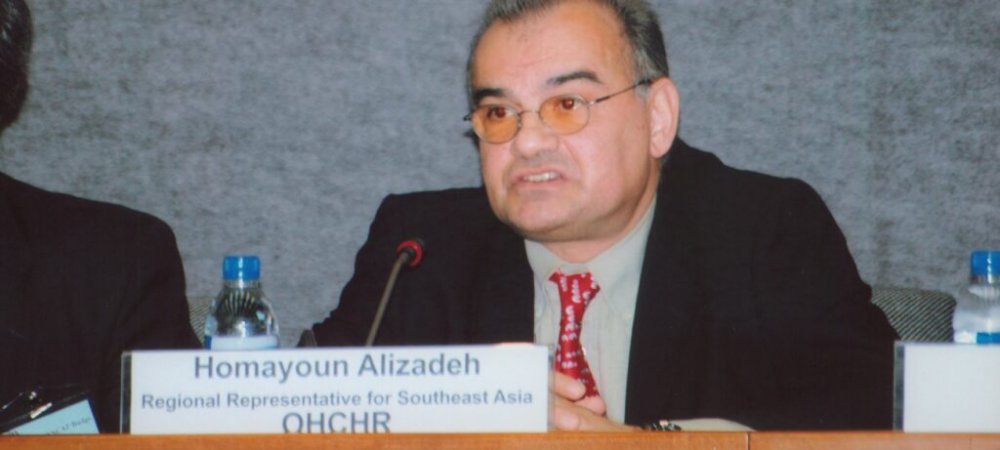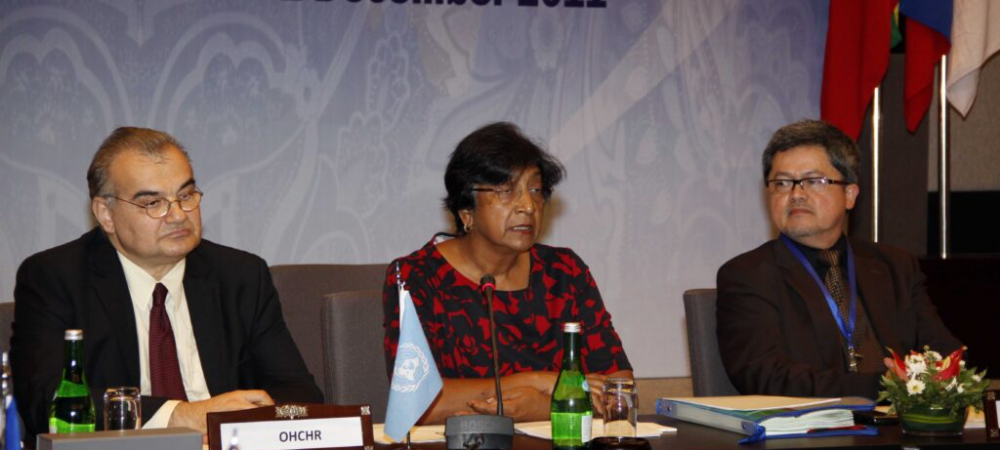The Islamic Republic of Iran in a Complete Predicament?
The announcement by the U.S. President on 8 April at the White House, in the presence of Israeli Prime Minister Benjamin Netanyahu, regarding the initiation of negotiations with the Islamic Republic of Iran over its nuclear program marks a new chapter in diplomacy between the United States and the Islamic Republic of Iran — a regime that has consistently rejected direct talks with its long-time adversary, the U.S. This is particularly notable given that it was Trump himself who withdrew from the Joint Comprehensive Plan of Action (JCPOA) in May 2018, which — from Tehran’s perspective — constituted a violation of an international agreement and prompted Iran to accelerate its uranium enrichment program. This announcement comes at a time when Iran is under severe pressure, both domestically and at the international level.
Iran Under Domestic and Foreign Pressure
From a domestic political perspective, the Tehran government is at an impasse. For years, public protests and nationwide strikes by workers, teachers, truck drivers, and employees of various companies have persisted in response to the country’s economic crisis. The high rate of youth unemployment, growing income inequality, soaring food prices, the continued devaluation of the national currency (Rial) against the U.S. dollar, and ultimately the sanctions that have severely impacted a large portion of Iran’s population are clear signs that the Iranian regime is facing a serious crisis and is practically incapable of implementing effective solutions. Furthermore, widespread corruption and abuse of power have caused the regime to lose its moral, religious, and socio-political legitimacy among the people, and it no longer holds public respect or authority. The majority of the Iranian population is calling for a fundamental change in the country’s social and political structure.
From a foreign policy perspective, the Islamic Republic of Iran has suffered significant setbacks across the Middle East. The “Axis of Resistance”, which Iran had painstakingly built over the past decades — stretching from Iran to Iraq, Syria, and Lebanon — has effectively collapsed over the past six months due to Israeli attacks and the fall of Bashar al-Assad in Damascus. In Iraq, following an order from Grand Ayatollah Sistani, all Iran-backed paramilitary groups are to be integrated into the regular Iraqi army. This move is intended to curtail Iran’s long-standing geopolitical influence in Iraq, particularly as the majority of the Iraqi population sees Iran’s presence and interference in domestic affairs as a key cause of the country’s dire socio-economic situation. Ultimately, only time will prove how long the Houthis in Yemen — Iran’s last remaining ally in the region — can continue to block international shipping lanes in the Red Sea as a protest against Israel’s military operations in the Gaza Strip.
Additionally, the explicit threat made by the U.S. President that “unprecedented airstrikes like nothing ever seen before” would occur if Iran refuses to comply with U.S. demands
to limit its nuclear program, has placed the regime in Teheran in a defensive geopolitical position. As a result, shortly after Trump’s announcement, the first negotiations took place in Oman on April 12, followed by further talks in Rome on April 19. More discussions are expected in the near future.
Military Intervention and Possible Future Scenarios
The potential deployment of U.S. long-range stealth bombers—such as the B-2 and B-52—at Diego Garcia, a remote British base in the Indian Ocean, along with the dispatch of a second aircraft carrier, the USS Carl Vinson, to the region, clearly indicates that in the event of a failure in negotiations between Iran and the United States, the likelihood of a large-scale military intervention against Iran would significantly increase.
Some observers, members of the Trump administration, and also Netanyahu believe that a military strike on Iran’s nuclear facilities could lead to a change or even the downfall of the current regime. They argue that such an attack would prompt the masses to take to the streets, trigger widespread strikes in key industries such as oil and steel, and that this wave of protests could encourage segments of the army, the Revolutionary Guard, and the security forces to side with the popular movement—ultimately resulting in regime change. In this context, the fundamental question remains: Who would be capable of leading such a transformation?
Is Reza Pahlavi a viable alternative to the regime?
Reza Pahlavi, the son of Iran’s last Shah who has lived abroad since the 1979 revolution, has in recent years gained some popularity among opponents of the current regime both inside and outside the country. His supporters argue that he is the only available alternative to the Islamic Republic, and that in the event of a military intervention by the U.S. and Israel—who have supported him for years—he would have the opportunity to take political power.
However, this assumption is far from reality. Reza Pahlavi neither possesses the charisma of someone like Ayatollah Khomeini, who was able to lead a revolution from abroad, nor does the majority of the Iranian population have a meaningful connection with the Pahlavi dynasty, or the desire to entrust the country’s future to the son of a former monarch who has lived in comfort and safety in the United States for over 46 years.
The notion that the Revolutionary Guards or the Iranian military would support him in taking power is also unrealistic. The transfer of power to Khomeini and his followers after the Shah’s departure only occurred when, at the command of the Shah’s longtime friend and confidant, Hossein Fardoust — General of the Imperial Army, head of Special Intelligence, and deputy head of SAVAK — the military leaders of the Imperial Army declared their neutrality in a letter, paving the way for Ayatollah Khomeini to take control. The idea that such a scenario could repeat itself in today’s Iran is far-fetched, and this historical script will not be replayed. Moreover, there are numerous political figures and groups inside Iran who have the capability to advance democratic processes and reforms and navigate the country out of its economic and political crises. Reza Pahlavi’s supporters, however, often completely ignore this reality.
The second scenario could be that the Islamic Revolutionary Guard Corps (IRGC), in order to preserve its own interests, removes the current Supreme Leader, Ayatollah Khamenei, and takes direct control of power. However, this would mean the end of any democratic transition process and could potentially turn Iran into another North Korea in the region — although many Iranians would likely welcome the removal of the clergy from political power.
The third scenario could be the outbreak of a civil war similar to those in Syria or Libya, which would bring catastrophic consequences for Iran. In such a situation, the territorial integrity and national sovereignty of Iran would be at serious risk, and — as was the case in Syria — the path toward the country’s fragmentation could be paved. From the perspective of some regional players, including Israel, a weakened and divided Iran may be seen as desirable. However, instability in Iran could disrupt the existing balance power in the region and severely jeopardise peace and stability in the Middle East.
A potential military strike by the United States and Israel would very likely provoke severe military retaliation from Iran — counterattacks that could target Saudi oil facilities and other American or Israeli interests. This is a scenario that no Arab country, from Egypt to the Gulf States, would desire. These nations are deeply concerned about the social, political and economic consequences of such a war, especially in light of the ongoing bloodshed in the Gaza Strip.
Diplomacy and Economic Policy Versus Military Confrontation
From today’s perspective, it is difficult to determine whether the two countries will be willing to reach a compromise without losing face in the eyes of the public. However, one can assume that both sides will adopt a pragmatic approach to the negotiations in order to find common ground and reduce existing tensions. The ongoing talks could serve as a springboard for broader and mutually beneficial security dialogue, ultimately aimed at preventing military conflict in the region — although hardline factions in the United States, Israel, and Iran show little fear of a military showdown and appear prepared to escalate it at any cost.
Despite the harsh rhetoric from both countries, President Trump and Ali Khamenei are well aware of the catastrophic consequences a military conflict would bring, not only for their own countries but for the entire Middle East region. Trump is acutely aware that the failed U.S. military operations — from Iraq to Afghanistan — have cost billions of dollars and caused millions of casualties. A war with Iran could be far more disastrous, especially considering that Trump is currently grappling with the Ukraine crisis, the Gaza conflict, and global trade tensions. Therefore, it seems unlikely that he would seek to escalate the crisis with Iran at this time.
Potential Outcomes
In one potential positive scenario, Iran would accept maximum transparency and inspections of its nuclear facilities under international regulations as a strong guarantee that it was not seeking to develop nuclear weapons. Iran would reduce its uranium enrichment level from 60% to 5% and commit to permanently refraining from high-level enrichment. Additionally, Iran would allow the International Atomic Energy Agency (IAEA) to conduct surprise inspections at undeclared sites. Ultimately, Iran would transfer its high-enriched uranium stockpiles to a third country and use its nuclear program exclusively for peaceful, non-military purposes. In return, Iran would gain access to its frozen financial assets by the United States, regain the ability to export its oil, and the United States would lift both primary and secondary sanctions against Iran. The signatories of the nuclear agreement (JCPOA) — including Russia, China, the UK, France, and Germany — would also show their readiness not to trigger the so-called “snapback mechanism” of UN sanctions against Tehran.
This scenario, however, is in complete contrast with the demands of Benjamin Netanyahu, the Prime Minister of Israel, who seeks an agreement under which Iran’s nuclear facilities would be inspected, dismantled, and destroyed under direct American supervision. This approach would be rejected by the current leadership of the Islamic Republic of Iran, as such demands are likely to be seen as an unacceptable humiliation and a form of surrender to Israel and the United States.
The risk of failure in negotiations between the United States and Iran — especially if Iran’s missile program becomes a key part of the nuclear talks — remains very high. In such a scenario, the likelihood that Israel would seize the opportunity to launch a military strike against Iran increases significantly, particularly given that the Tehran regime is in its weakest position in recent years, both militarily and economically, and no longer holds the strategic position it had in 2015.
The U.S. containment policy against China and Washington’s economic interests
Donald Trump, the President of the United States, is pursuing a policy with Iran that involves it in broader geopolitical considerations. As part of the China containment strategy, Trump is attempting to bring the Islamic Republic of Iran back into the US sphere of influence, despite its Shiite nature and fundamentalist ideology, similar to what occurred during the Pahlavi regime. President Trump’s current policy on the war in Ukraine, his obvious concessions to the aggressor Putin (ceding Crimea to Russia) and the US president’s planned visit to India are clear signs of the US’s containment policy towards China, aimed at isolating this major power geopolitically.
This comes in the context of China’s promises of a $400 billion investment in Iran’s oil, gas, petrochemical, and transportation sectors not having been fully realized. Similarly, the plan by the Russian company Gazprom to invest $40 billion in Iran’s gas industry has also not been implemented to date.
Donald Trump’s main focus is on the revival of the U.S. economy. Although he has expressed interest in reaching an agreement with Iran, his prioritization of U.S. economic interests means that any deal must include significant economic components. The Trump administration is aware that Iran is in dire need of foreign investment to rebuild its aging oil and gas infrastructure and support other key sectors, such as its large domestic automobile industry. These components gained even more relevance when, earlier this month, the President of Iran, Massoud Pezeshkian, stated that the leader of the Islamic Republic of Iran “has no objection to the presence of American investors.”
Access to the 90 million-strong market in Iran and the exploitation of its untouched natural resources are other important economic components that align with the current economic strategy of the Trump administration. However, whether American companies, considering Iran’s lack of proper infrastructure in the transportation and energy sectors, the issue of corruption and transparency, and of political instability, would be willing to make large investments in Iran’s struggling economy is far from certain.
Democracy and Human Rights
Whether the outlined scenarios and expected outcomes regarding the ongoing negotiations between Iran and the United States are truly achievable is one side of the coin. The other side, however, is whether these bilateral negotiations will seriously address the process of democratization in Iran and the protection of human rights. From today’s perspective, it appears that the Trump administration is unwilling to incorporate these important elements into the negotiation process. Additionally, it seems unlikely that the European Union or Western European countries will have the opportunity to introduce human rights topics into future talks, especially given the fact that the current Iranian regime has always tried to separate the nuclear program from human rights issues. Iranian opposition groups abroad, as well as human rights lobby groups, will also face significant challenges in pushing their human rights agendas into the negotiation process.
The Islamic Republic of Iran may continue in its current form for many years to come, despite having reached a deadlock in both its domestic and foreign policies. Nevertheless, one undeniable truth remains: the struggle of the Iranian people for democracy, intellectual diversity, justice, and respect for human rights will persist. The advancement of the process of democratization in Iran lies solely in the hands of the Iranian people, and not in the hands of foreign powers seeking “regime change” through military action in the country.
Vienna, May 01, 2025



